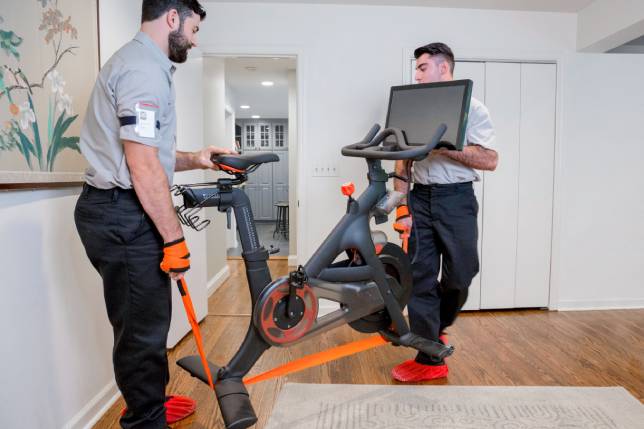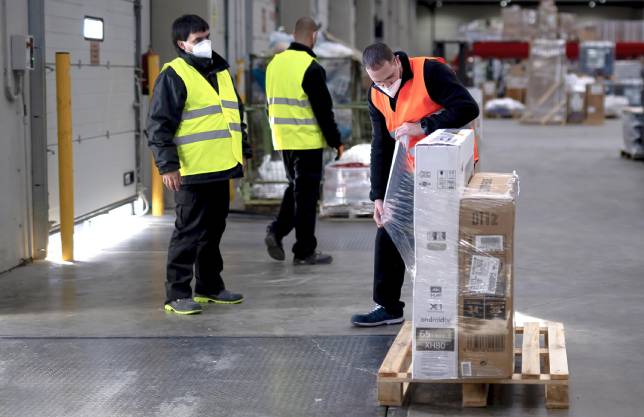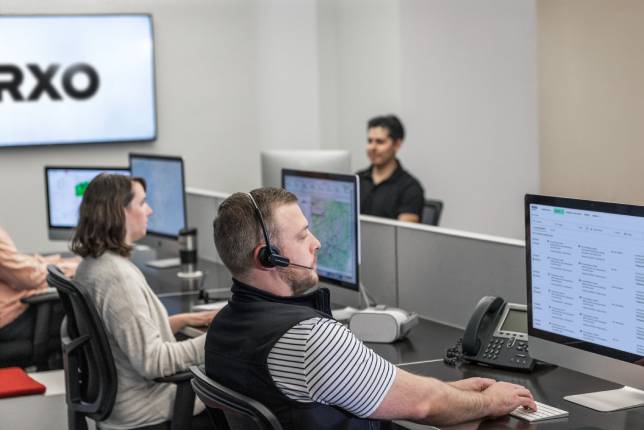“Last mile” logistics — also referred to as “final mile” — is the last leg of the shipping journey for a product. When the item is small and lightweight, the last mile delivery may be made to your mailbox or front door by the postal service, or by a courier, such as FedEx, UPS or Amazon. But, what if the product is heavy and bulky, like a refrigerator or couch?
In the world of last mile for heavy goods, the final leg of the shipping journey is typically the move from a transportation hub to the room of choice inside a consumer’s home. When this service is provided by a third-party logistics provider (3PL), their access to resources for that final leg is crucial to ensure high customer satisfaction and brand protection.
Five key steps
Last mile logistics service for heavy goods is most often used by big-box stores and other retailers with brick-and-mortar store networks and e-commerce sites, and manufacturers that sell direct to consumers.
- 01
Consumer purchase.
The process begins when a consumer places an order for a large, high-value item — often online. Orders are captured by the retailer’s system and shared with the last mile service provider. Retailer and consumer visibility into the order journey begins with a tracking number and order status.
- 02
Move to the hub.
The process continues with the physical transport of the product along the supply chain to the final hub (warehouse or other staging facility) prior to delivery. Orders are scanned and visibility is updated for tracking purposes. The retailer and the consumer can see that the order has arrived at the final hub and preparations are being made to complete the delivery.
- 03
Preparation for delivery.
The order is scheduled for delivery, routed and assigned to a contracted carrier based on the destination and requested delivery timeframe. Consumer notifications are sent out electronically to let the recipient know when to expect delivery. A good last mile technology system will also facilitate consumer interactions with the delivery provider to arrange final scheduling.
- 04
Scanning and loading.
The fourth step, final scanning at the hub, is carried out before the product is loaded onto the delivery truck. This triggers another real-time status update so that the retailer and the consumer can see their order is heading out for delivery.
- 05
Delivery completion.
The last mile service is completed when the order arrives at the destination, the item is placed inside the home and any scheduled services are performed, such as assembly, installation, testing or removal of old product. If a follow-up service is needed, this is noted in real time, along with the exception or reason for the follow-up. The consumer signs for the delivery and proof of delivery is created electronically. At this point, the product has reached its ultimate destination.
Why is satisfaction so essential?
Last mile service is in more demand than ever, in part because consumers are feeling comfortable buying appliances and other large items online. For some brands, the final mile delivery is the only point of human contact with the customer — it replaces the traditional interaction between sales clerk and customer in a store.
The success of this final interaction is paramount to building goodwill and earning repeat business. This is particularly true when a large, high-value item requires professional installation or other white glove service inside the home. A quality last mile logistics provider that specializes in heavy goods has the resources to ensure exceptional service levels.
A competitive advantage
A well-regarded brand is essential for the long-term success of any retail strategy. And, whether the brand is a startup or established for generations, the last mile delivery experience is perceived as an extension of that brand, with the power to build or erode trust.
Furthermore, superior last mile delivery service can be a differentiator for competing merchandise, because consumers place a very high value on their comfort level inside the home. A company that uses a professional last mile logistics provider like RXO is assured that the delivery will be made at the agreed time and will comply with all other special requirements, distinguishing the brand from competitors that provide a less reliable consumer experience.
Last mile solutions are tailored to your products
RXO is the largest provider of outsourced last mile service for heavy goods in North America. We help brands in many different sectors become more efficient in the final mile by tailoring our service to the product categories — keeping costs in check and providing technical support, including real-time digital tracking and installation by licensed contractors. Click through any section on this page to learn more about how we can support your business.
Last Mile – 3 min read
Why Forward Stocking is Smart Inventory Management
A critical strategy for any business managing stock-levels close to customers
Managed Transportation – 2 min read
Benefits of a Transportation Control Tower
Effectively minimize delays and maximize impact of performance data
Resources by category
Text to describe more about what a user would get if they clicked on any of these links


